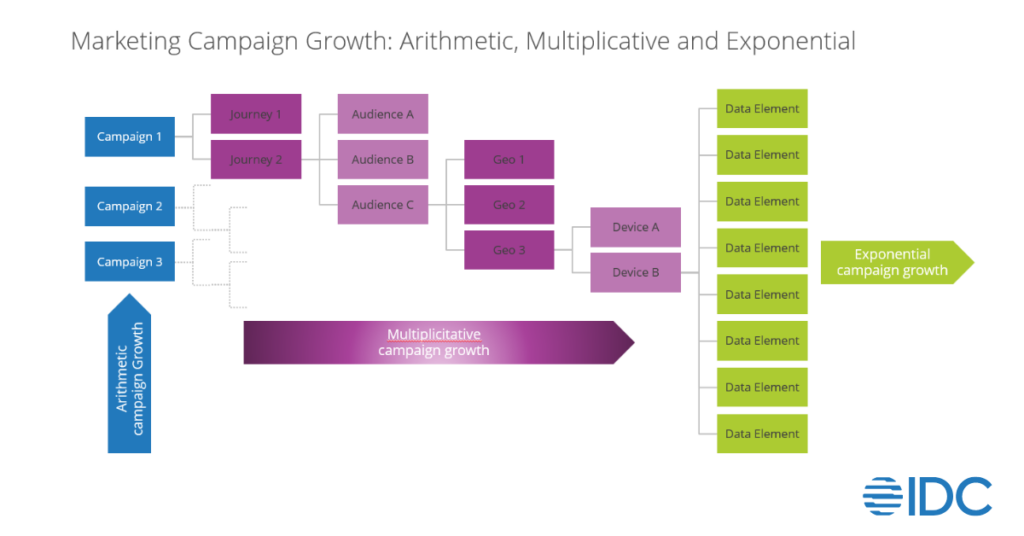In today’s sprawling realm of content marketing, establishing an authentic connection with your audience is no longer an option but a necessity. With the proliferation of generic content and the ever-expanding outreach channels, personalization in the digital age is a significant challenge for many marketer organizations.
The Imperative of Personalization
Imagine a bustling marketplace, vendors competing for attention. Amid the noise, what captures your interest? It’s the vendor who remembers your preferences, understands your needs, and tailors their offerings accordingly; the vendor who shows empathy, builds trust and inspires loyalty in customers.
In the digital sphere, content personalization recreates this personalized shopping experience. Successful content personalization entails crafting content that isn’t just broadcasted but resonates deeply with individual preferences, making each user feel valued and understood.
However, in the cacophony of content flooding digital channels, traditional one-size-fits-all strategies fall short. Personalized content goes beyond merely inserting a name; it’s about deciphering user behaviors, comprehending their wants, and delivering content that genuinely strikes a chord.
Data drives Personalization expansion
Until recently, marketers often employed “batch and blast” campaigns – generic messages sent out en masse, devoid of personalization. These campaigns were a mere numbers game, lacking relevance and compliance.
However, with the advent of marketing automation platforms layered atop CRM data, campaigns started gaining personal touches. Marketers could design campaigns based on limited yet more personal information. This transition marked a move from arithmetic growth – one campaign after another – to multiplicative growth, where controlled scenarios were crafted with ease.

Nowadays, marketers have access to even more data courtesy of tools like Customer Data Platforms (CDP). Each data point – from buyer intention to past purchases – drives exponential campaign growth as shown in the green boxes on the right of the above figure. This data-driven reality poses challenges for downstream functional groups who struggle to manage the influx of auto-generated, real-time campaign ideas. In this context, content curation at scale becomes a crucial driver of success – a challenge many CMOs are grappling with.
In the digital age there are exponential possibilities for content personalization. Modern CMOs need to leverage new tools – real time data, GenAI, content management, atomic content – to engage audiences across the myriad of medium and the deluge of distractions.
Breaking down content to build up personalization.
To address the need for highly customized messages, today’s CMOs are adopting innovative strategies. Taking a page from dynamic content optimization, atomic content, and other technologies, marketers are looking to breaking content into smaller components. This allows marketers to generate personalized assets as needed – leveraging Generative AI and real time data where possible.
For instance, instead of creating a standard product page, marketers can create a collection of product features. Each feature tagged with alignment attributes like seasonality, buyer stage, and demographics. These tags then facilitate reassembly for specific data-driven use cases.
Instead of developing assets far in advance for say, a “manufacturing CFO doing research,” the system can generate personalized assets for various, and infinite, scenarios such as: CFO vs. CTO, Manufacturer vs. Retailer, Top of Funnel vs. Post-Purchase, and more. This process creates content on-the-fly, adapting in response to real-time inputs.
The Evolution of Engagement: Unleashing Personalization
Modern CMOs are embracing a practical, data-driven approach to content creation. They’re breaking down content into manageable pieces and utilizing AI-powered tools to seamlessly blend these components for diverse audiences. This adaptability not only streamlines the marketing process but also empowers brands to establish significant connections, harnessing the potent power of data for tangible impact.
Content creation from a data-driven approach drives personalization which will create better user experiences based on empathetic relationships between customers and brands. These relationships are built on what the customer wants and how they want to be treated through the lens of technology. Brands need to engage with customers in a contextual manner based on awareness, engagement, learning, and measurement.
As channels multiply and data flows in, mastering this complexity presents both a challenge and an exhilarating opportunity. It’s a chance for brands to navigate profound connections and wield the potential of data to craft impactful experiences.
By diving into this complexity and making the most of available tools, brands can effectively resonate with their audience, traverse the evolving currents of content marketing, and emerge as genuine pioneers of audience engagement in the digital age.
For more information on the Future of Customer Experience, read our blog:




